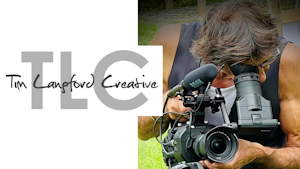essay-assignment-two-7vc015tim-langford-230545.pdf
Sometimes looking back and sifting through family photo's can stir memories that are visceral trigging emotions and images of the past that nestle deeply in your mind's memory banks. So inspired by the family archive I kept after Mum died, whilst studying at art school, I wrote and curated Mementoes-A Meditation on a Personal Archive which you can read via the link above. The study is based on the extensive research and reading I did; especially the work of Roland Barthes, the cultural theorist who produced a seminal analysis of family photo's called Camera Lucida...Here's an extract from page 1 (full of academic references which are mandatory at university I'm afraid):
“Memories Are Made of This” (Gilkyson et al., 1955) Dean Martin’s mellifluous rendering of the song encapsulates a timeless sentiment; the memories of love and family, but that song evokes a deeper personal memory; the memory of the author’s Father and his own childhood. Tellingly, “Memories are made of this” was also the slogan that Kodak chose to market their best-selling Instamatic camera in the 1960s (Wells, 2015, p.167). The song is one of many that this authors Father recorded on reel-to-reel magnetic tape in the ’60/70’s and - like the copies of old photos he keeps (many taken on an Instamatic camera) - is also haptic. To handle the spools themselves can feel highly “charged” in the sense that Csikszentmihalyi and Rochberg-Halton suggest; that we invest “psychic energy in an object [and] that object becomes "charged" with the energy of the agent” (1981, p.8). Beside his tape-memories there exists what Meir Wigoder terms “an orphanage” (2001, p.29); a pile of uncatalogued family photos in boxes, albums and envelopes inherited, in the main, from his Mum and Dad. In Csikszentmihalyi and Rochberg-Halton’s survey of American households they list under photograph ‘"memento," "recollection," "heirloom," and “souvenir”…all combined in the class “Memories”’(1981, p.8). Olga Shevchenko argues that the metaphor of the photo as memory was established early on, indeed in 1859 Oliver Wendell Holmes dubbed the photo ‘a mirror with a memory’ (2015, p.273). It was the counterpoint to the irreversible flow of time, preserving the past. This technology emerged at a time of ‘memory crisis’, a ‘general anxiety’ in the 19th and early part of the 20th century. The camera was ‘mobilised’ to preserve and accurately represent the disappearing past; in effect, what was being lost (alongside a dying generational folk memory) would be retained as an image memory as opposed to a memory image. These images would then eventually become “Treasured Memories” persevered in albums (Batchen, 2004, Olick, 2014, Terdimen,1993, Kern, 1986, cited by Shevchenko, 2015, pp. 272-273). The seeds of this essay were sown several years ago following the passing of the authors Mother in 2013. He wrote to himself in a private journal “Roots. Mum is the door that opens onto the past…” (Langford, 2013) but then, to extend the metaphor, those seeds had lain in largely fallow ground since 1993 when his Dad died : …After Dad told me he had prostate cancer…they both stood together on the doorstep to wave goodbye…And Mum when widowed would always do the same. Until the time she could no longer do so & [sic] stood @ [sic] the window. And after that no more (Langford, 2013, p.5). Though Mum said ‘“I may be in the departures lounge but I haven’t taken off yet”’ (Langford, 2013) when death finally came it set in train some kind of an existential crisis - Page 4 “I have to go back to explore my past. I have to go back to explore who I am. To know thyself…I have lost my voice and I have to go back (perhaps in time)…” (Langford, 2013).

